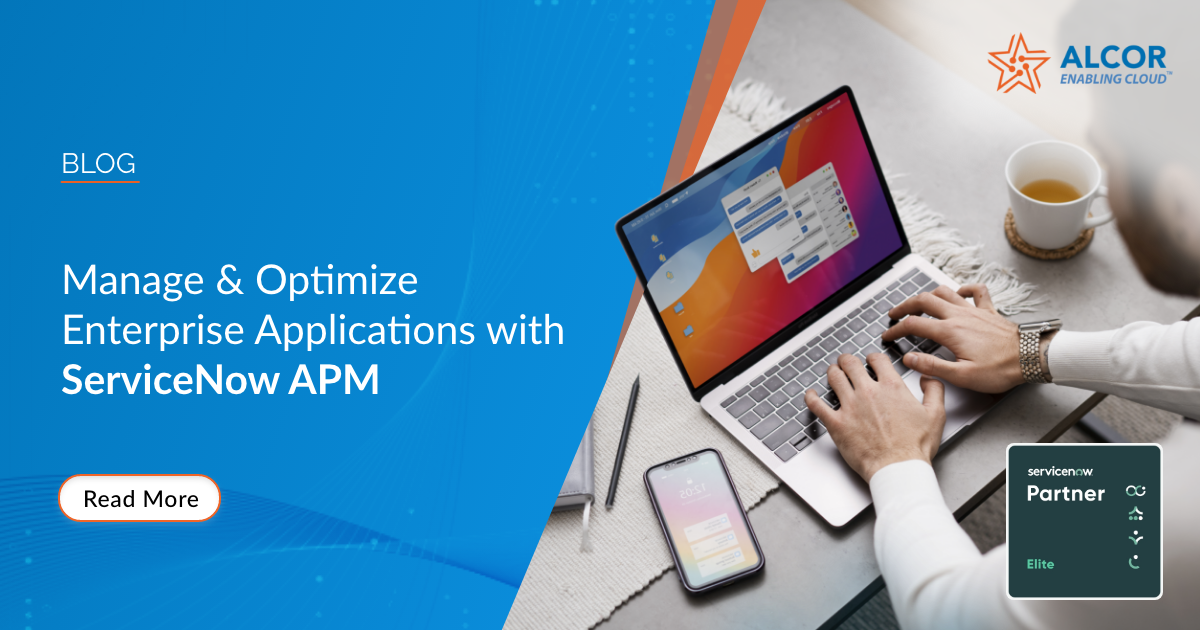30 Mar, 2023
Every organization has a huge count of application inventory but due to a lack of standardized process no one has the visibility of where they are, how it is being used, who is using it, whether it is fit for use, how is it aligned to business strategy and many such questions to which no one has an answer to.
For any business to succeed in the modern world, it is essential that they recognize, comprehend, and have a standardized process to control these applications. These applications may be home-grown, legacy, or acquired as a result of a merger or acquisition.
This is where ServiceNow Application Portfolio Management (APM) helps businesses to gain a comprehensive understanding of the applications used in the organization. By consolidating applications within the same business function, you can identify applications to modernize or upgrade.
APM also helps you decide whether to invest, sustain, or replace applications based on the business need aligned towards the organization’s goal.
What business challenges can be addressed by APM?
- Redundant applications for similar functions.
- Increasing cost of owning and maintaining applications.
- Increasing demand to upgrade the existing applications for new functions.
- Conflict between in-house legacy applications and that of vendors.
- Inadequate performance because of outdated applications.
Application Portfolio Management Process
- Identify the inventory of all business applications and the underlying technology platform they use.
- Capture your business applications and Identify ownership, both IT and Business.
- Categorize your applications by a set of categories you will use in rationalization, such as technical function (widespread).
- Align applications to their corresponding Applications Services.
- Identify and set other attributes such as Application Family for suites, technical platform, application type, etc.
- Once the application inventory is identified measure and establish the gathered metrics against application inventory. Application Portfolio Management provides a set of indicators such as risk, user satisfaction, quality, incident counts, etc. to measure these applications.
- Utilize the metrics from these indicators to evaluate applications – use Application Portfolio Management’s dashboards and analytic tools to analyze results from classification and measure to evaluate the portfolio.
- Based upon evaluation make decisions and derive recommendations for the applications in your portfolio. These decisions include –
- Investing in applications (to upgrade or Modernizing legacy applications) or
- Maintaining an existing application as it serves the business purpose or
- Replacing an existing legacy application with a modern application or
- Retiring an existing application which has become obsolete, functionality is duplicated or is no longer aligned with the company’s goals.
- Finally based on the decision and analysis take action, and create Demands and Projects in alignment with the business strategy.
More importantly this approach allows the development of an integrated roadmap to proactively manage the application portfolio which is essential for today’s world. If a business can’t effectively & efficiently manage all its digital assets through their entire lifecycle, it can’t optimize its performance.
Key Stakeholder’s Interest
- IT Leadership
- Application cost and investments to support mission-critical capabilities.
- Technical debt and Application rationalization.
- Enterprise Architects
- Business capabilities supported by applications.
- Technology standards and lifecycle plans.
- IT Operations
- Application stability; high incident counts.
- Up-to-date application for infrastructure mapping.
- Application Owners
- Business value and health of applications.
- Prioritization of maintenance and upgrades.
- Common Interests
- Number of applications and application ownership.
- Applications by business capability, data classification, business criticality, PII data, etc.
- Accuracy of application information.
- Application Cost.
Benefits of Application Portfolio Management
- Cost optimization: APM helps to identify redundant, underutilized, or outdated applications, allowing IT leaders to rationalize the application portfolio and reduce license, maintenance, and operational costs.
- Risk reduction: Through using APM you’re able to proactively reduce the technology risk of the business application portfolio by monitoring the technology versions and lifecycles of the hardware and software that run them.
- Alignment with business strategy: APM enables the better alignment of the application portfolio to business strategy by establishing a business capability map and linking capabilities to the business applications and services providing them.
- Improved decision-making: APM drives better decisions by leveraging a broad array of indicators, including cost, quality, risk, user satisfaction, and business alignment, to assess the application portfolio and determine where to invest, sustain, migrate, or retire.
With so many benefits, what is holding you back?
For more information, please reach us at information@alcortech.com

 Back to Blog
Back to Blog